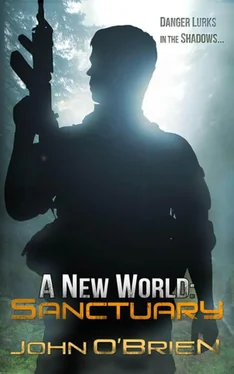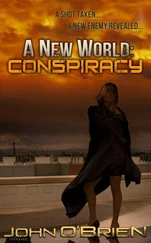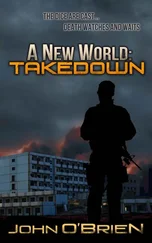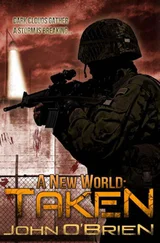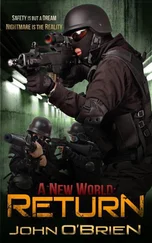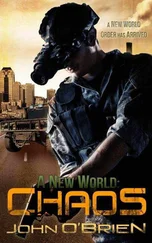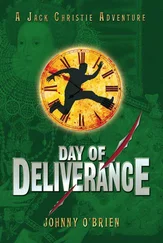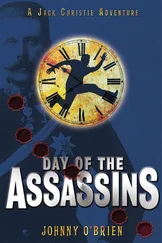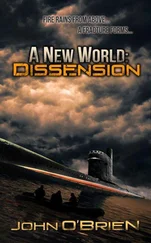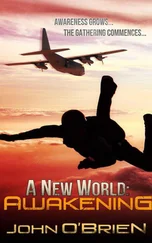Smoke billows in the distance throughout the day as the burn teams tackle another area. At times when stepping out of the Humvee close to the large, rising column of dark smoke, I hear the sound of someone calling over a loudspeaker. The individual words can’t be heard but the sound is unmistakable. It’s the teams calling out ahead of the burns to see if there are any survivors in the area. Only once do I hear the actual announcement.
“This area is scheduled for a burn. If there’s anyone alive, we can provide shelter and food. If you need assistance, let us know in some way. Again, this area is scheduled for a burn….” The voice then drifts off as whoever it is turns, gets farther away, or something comes between us blocking the rest.
We return to our sanctuary with the light beginning to fade from the day. The smoke from the fires is lending a yellowish-brown cast to the clouds and light. Two of the trucks, loaded with concrete partitions, pull in ahead of us and park by one of the cranes to offload. The teams with the wall have made tremendous progress and the wall now stretches several hundred feet from where they started this morning. If we can continue to make this kind of effort, we’ll be finished long before the summer and good weather leaves. More importantly, we’ll be finished when we still have longer days in which to get the rest of our place in order to prepare for the winter months.
The priority is still with the wall, but I see our next will be keeping enough fuel on hand for the generator and to prepare for the eventuality for when we won’t be able to use it. I still feel we’re under the gun somewhat but looking at the partially built wall, stretching across the now torn up and dusty field, gives me a sense of satisfaction. The feeling and experience I had earlier in the day still sits inside and I’m thankful for it. I’m reminded that there’s a fine line between the satisfied feeling I have now and the total, mind-shattering grief it could have been.
The next day is mostly a repeat of the last with the exception that the mission is centered on short-term fuel gathering and storage. Bannerman mentions the vast amount of diesel we are running through. The semi’s and cranes suck down a tremendous amount. We rig a fuse panel insert onto the towed generator that we can hook into a main building bus panel and travel around to a few gas stations; some we visited yesterday. There are many fire stations in the area and we pick up a couple of tenders (trucks designed to carry a large amount of water), empty them, and pump the diesel into them. We denote “diesel” on the side so, if we decide to opt for this solution for other fuels, we won’t mix them up. I decide on using the fire trucks as opposed to tanker trucks as they have the ability to both pump and siphon.
The wall stretches further by about the same amount as the day before when we arrive after the end of the day. Robert, Bri, and the other civilians we picked up start their training the next day. Bannerman found Lynn her bulldozer somewhere and a long row of dirt lines one end of the field forming a berm wall. She has her shooting range. The neighborhood burn teams have located and brought in four additional survivors. They were holed up in a barricaded house at the end of a cul-de-sac. They mentioned they were running low on both food and water and were hesitant to venture forth to find any with their low numbers. This gives hope that there are others and we’ll continue to look for them as best we can.
We open the doors the following morning to a cloudy and drizzly day. There is a hesitance on keeping the doors open as I don’t know how the cloud cover will affect the night runners. There aren’t any in sight but we delay the start to our day, sending patrols out to verify that the streets and areas are indeed still ours. They come back and report that there are no runners in sight so our day proceeds. Robert, Bri, and the others begin their training under Lynn with some help as needed by the standby team, which happens to be Red Team today.
We discussed, during last night’s meeting, that we should start thinking towards our long-term energy needs so the supply teams are off to find solar panels today. If they can locate them early enough in the day and have time, then they’ll also start cutting back the trees from the wall and its intended route. They’ll use the numerous blocks of C-4 we pulled from the armories to blast out the stumps. The teams gathering the concrete partitions actually found another pile driver at a construction site and are driving it back. That should make the wall progress even further as that is the most time consuming part of building it. I talk to Bannerman about putting video cameras up around the perimeter so we can see what’s going on outside prior to opening the doors, even at night if we need to. I mention we could use the security cameras from the bases as they have infrared capabilities. He said he’ll put that on his list of items for the teams to gather.
Bri asks about freeing the zoo animals at one point during our evening on the roof together. I think about that for a moment and bring it up at the nightly meeting which we now hold after dinner. My thought is that the animals would be dead after this long but the discussion goes that we should look into it, perhaps sending a supply team up the next day to look and see what they can do.
At one point during the nightly discussion, Frank talked about setting up the motion cameras, which are quite prevalent in the store, around to track night runner activity. They flash and take a picture if something moves in front of its sensor. They’re meant to indicate trail movement of animals for hunters but it will serve our purpose. He wants to see what their activity is at night and track it. The exposure records time and date. Frank said he may be able to put together a picture of their nightly movements and see if there is any pattern. Lynn brings up that, if we can discern a pattern or busier places, we can set up traps and the like; tripwires with claymores being the most likely. We agree to have supply teams set up the cameras when they are out at places designated by Frank. They will check them and replace the digital storage every couple of days and move the cameras at the discretion of Frank.
One additional detail mentioned is our water supply. With the generators, it’s a no brainer to power the pump and provide for our needs. However, when the fuel is no longer viable to run the generator, then we’ll have to figure out how to draw the water. Although we have hopefully a year of fuel before it breaks down, that is short time when compared with the magnitude of the problem. I mean, we can haul water up from a river or creek with a horse or horses pulling a wagon with a water tank on it, but it will be easier if we can engineer a solution with the well already in place. Windmills, such as the wind generators that are in abundance in the Columbia Gorge, seem to fit the bill. Engineering them to work with the pump and transport them up will be the challenge but it is a long-term, viable solution.
The days pass as we settle into a rhythm of sorts. The wall extends a great deal daily until it is almost beyond our line of sight. I notice the night runner’s nightly attacks drop off to a degree but they are persistent little buggers. I wonder if it is different packs each night or if they are the same ones hitting us periodically through the night. Another reason might be that they are either dying off or moving out of the area. Frank continues to look at the pictures brought in and recognizes several packs by their clothing. It seems they might have an area they cover but that doesn’t hold true all of the time as some pictures, from multiple cameras spread throughout, show the same packs roaming large areas. His guess is their food supply has dwindled. Some pictures show a new pack arriving or a pack showing up only once. Traps are set in places that Frank indicates as high movement areas. The teams are briefed extensively of the trap locations. We also set traps outside some of the larger building entrances, where there are indications of night runners inside, in order to clear the building out some prior to entering for supplies. Some have to be replaced when the teams are out and note that the traps have been triggered. Night runner bodies lie in the streets where they have been activated. Our doors hold up and we check on the structural integrity daily.
Читать дальше
